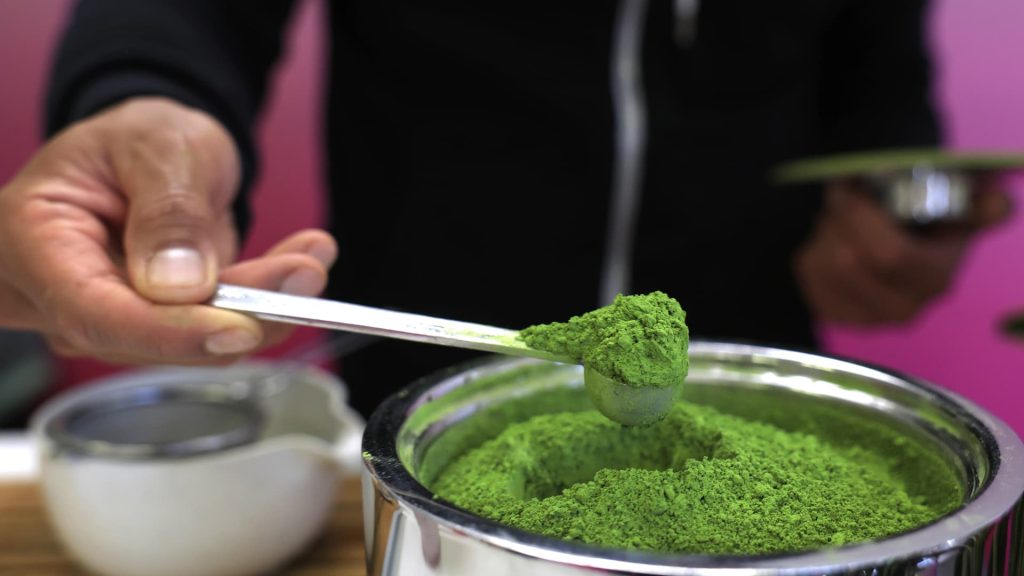A recent surge in matcha’s popularity has led to a global matcha shortage, driven by soaring demand and limited production in Japan, where high-quality matcha is grown.
Justin Sullivan | Getty Images News | Getty Images
TOKYO — When Chitose Nagao retired after nearly three decades in advertising to start a matcha cafe, she never imagined lines would be snaking around her shop before it opened. By midafternoon, the tins of matcha powder on her shelves are sold out, while a steady stream of mostly overseas customers is waiting to try her latest green concoctions.
Her store, Atelier Matcha, is one of the lucky ones. Although matcha supplies are running low even in Japan due to a global craze, a partnership Nagao cultivated with Yamamasa Koyamaen, a tea producer in Kyoto, is paying off.
“When I heard that all their tea was sitting unsold in a warehouse during Covid, I wanted to do something,” Nagao said. Four years later, she has two stores in Japan, one in Vietnam’s Ho Chi Minh City, and a new outlet that will soon open in Cebu City, Philippines.
Japan has been consuming matcha since the 12th century, mostly in highly ritualized tea ceremonies that require only a speck of powder. Demand skyrocketed in recent years as matcha’s reputation as an antioxidant-packed superfood spread over TikTok. A post-pandemic tourism boom has also pushed prices higher.
According to Japan’s Ministry of Finance, Japan exported 36.4 billion yen ($247 million) of green tea last year, four times more than a decade ago. Some 44% was bound for the U.S., mostly in powdered form, like matcha.
In an effort to address the strain on Japan’s aging farming communities, the Japanese government is considering subsidizing farmers to encourage them to dedicate more fields to tencha, the type of tea used to make matcha.
Tencha yields are more lucrative but also more labor-intensive, as the buds need to be shielded from the sun to bring out their distinctive grassy flavor. There are not enough hands to harvest, steam and dry the leaves before milling them into powder, producers say.
Shops ration supply
Tencha prices at this spring auction in Kyoto jumped 170% from the year before to 8,235 yen per kilogram, the Global Japanese Tea Association said. That shattered the previous record of 4,862 yen per kilogram, set in 2016.
Many retailers have also reported that matcha prices have doubled in the last year, and finding a small tin of the powder has become increasingly difficult, even in Tokyo.
Shops are placing purchase limits to make their stock last longer, discourage hoarding and fend off unauthorized resellers. However, matcha remains a popular souvenir for the record number of tourists visiting Japan.
Many retailers have reported that matcha prices have doubled in the last year, and finding a small tin of the powder has become increasingly difficult, even in Tokyo.
Many online stores sold out months ago as U.S. buyers rushed to stock up ahead of expected tariffs.
Kaminari Issa, which sells everything from matcha beer to matcha cream puffs at its four stores in Tokyo’s Asakusa district, said receiving an email request for a ton of matcha is not unusual.
“We’re happy,” said Miku Sugawara, who manages one of the stores. “But there’s only so much we can sell.”
Her shop sells matcha milled from the very first harvest of the season, when the tea leaves are tender, which is considered the highest quality.
Like many others in the trade, Sugawara worries that this summer’s record heatwave could lower next year’s tea harvest and push prices even higher.
Matcha boom meets bottleneck
Competition to source and produce enough matcha is so intense that it forced Ito En, the world’s largest seller of bottled green tea, to create a dedicated division in May.
The company forecasts group overseas sales to rise 11% this year and is raising prices by 50% to 100% on several products from September in the face of higher raw material and labor costs.
Ito En has dedicated contracts with farmers that supply it with 7,000 tons of regular green tea each year, but only about 600 tons of tencha.
Convincing farmers to grow more tencha has been a challenge because many worry the current boom may wane, Ito En said.
“Matcha’s popularity has been incredible. Our own factories and all our contractors are jam–packed,” said Yasutaka Yokomichi, the manager of Ito En’s new matcha division.
The Japanese government is considering subsidizing farmers to encourage them to dedicate more fields to tencha, the type of tea used to make matcha.
He said one of his priorities is to secure enough mills to grind the tencha leaves into powder and package it, which may include fresh investments to expand Ito En’s own facilities. It can take one hour to mill just 40 grams of matcha, as the heat resulting from a faster process could degrade its quality.
Atelier Matcha’s Nagao said that educating consumers about the different grades of matcha may be the only viable option.
As a devotee of sado, or “the way of tea,” premium-grade powder isn’t necessary to make a good matcha açai bowl, she said. As an entrepreneur, she also has her sights set on the next big thing.
“Hojicha,” Nagao says, referring to another kind of tea with a nuttier profile and less caffeine. “Look, I only have one left today.”
Correction: This article has been updated to correct the company that Chitose Nagao is partnering with.


